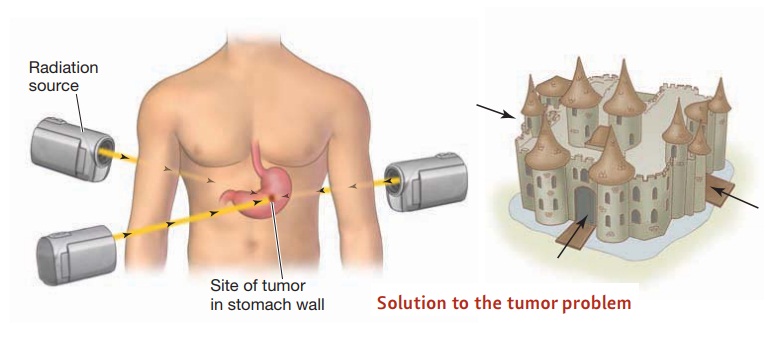Chapter: Psychology: Thinking
Problem Solving: Overcoming Obstacles to Solutions

Overcoming
Obstacles to Solutions
If problem-solving sets can
sometimes cause difficulties, then we want to ask: How can these sets be
overcome? Similarly, we’ve emphasized the importance of subgoals and familiar
routines, but what can we do if we fail to perceive the subgoals or are
unfamil-iar with the relevant routine?
A number of strategies are
helpful when people are stuck on a difficult problem, but one of the most
useful is to rely on an analogy. In
other words, you can often solve a problem by recalling some previous, similar
problem and applying its solution (or a minor variation on it) to your current
problem. Thus, a business manager might solve today’s crisis by remembering how
she dealt with a similar crisis just a few months back. A psychotherapist might
realize how to help one patient by recalling his approach to a similar patient
a year ago.
Analogies turn out to be enormously
helpful in many settings. They’re useful as a form of instruction, and so students gain understanding of how gas
molecules function by thinking about how the balls bump into each other on a
pool table; they learn about memory by comparing it to a vast library.
Analogies are also a powerful source of discov-eries,
and so (for example) scientists expanded their understanding of the heart,
yearsago, by comparing it to a pump (Gentner & Jeziorski, 1989). And, of
course, analogies are also helpful in solving problems. In one study (Gick
& Holyoak, 1980), for example, participants were given this problem:
Suppose a patient has an
inoperable stomach tumor. There are certain rays that can destroy this tumor if
their intensity is great enough. At this intensity, however, the rays will also
destroy the healthy tissue that surrounds the tumor (e.g., the stomach walls,
the abdominal muscles, and so on). How can the tumor be destroyed without
damaging the healthy tissue through which the rays must travel on their way?
The problem is difficult; and in
this experiment, 90% of the participants failed to solve it. A second group,
however, did much better. Before tackling the tumor problem, they read a story
about a general who hoped to capture a fortress. He needed a large force of
soldiers for this, but all of the roads leading to the fortress were planted
with mines. Small groups of soldiers could travel the roads safely, but the
mines would be detonated by a larger group. How, therefore, could the general
move all the soldiers he would need toward the fortress? He could do this by
dividing his army into small groups and send-ing each group via a different
road. When he gave the signal, all the groups marched toward the fortress,
where they converged and attacked successfully.
The structure of the fortress
story is similar to that of the tumor problem. In both cases, the solution is
to divide the “conquering” force so that it enters from several dif-ferent
directions. Thus, to destroy the tumor, several weak rays can be sent through
the body, each from a different angle. The rays converge at the tumor,
inflicting their com-bined effects just as desired (Figure 9.23).

With no hints or analogies to
draw on, only 10% of the participants were able to solve the tumor problem.
However, if they were given the fortress story and told that it would help
them, most (about 80%) did solve it. Obviously, the analogy was quite help-ful.
But just knowing the fortress story wasn’t enough; participants also had to
realize that the story was pertinent to the task at hand—and, surprisingly,
they often failed to make this connection. In another condition, participants
read the fortress story but were given no indication that this story was
relevant to their task. In that case, only 30% solved the tumor problem (Gick
& Holyoak, 1980, 1983).
Clearly, analogies are helpful. Even so, people often fail to use them, even if the plau-sible analogue is available in their memory. Is there anything we can do, therefore, to encourage the use of analogies? It turns out that there is. Evidence suggests, for exam-ple, that people are more likely to use analogies if they’re encouraged to focus on the underlying dynamic of the problem (e.g., the fortress problem involves converging forces) rather than its superficial features (e.g., the problem involves mines). This focus on the underlying dynamic calls attention to the features shared by the problems, help-ing people to see the relevance of the analogies and enabling them to map one problem onto another (Blanchette & Dunbar, 2000; Catrambone, 1998; Cummins, 1992; Dunbar & Blanchette, 2001; Needham & Begg, 1991).
Related Topics